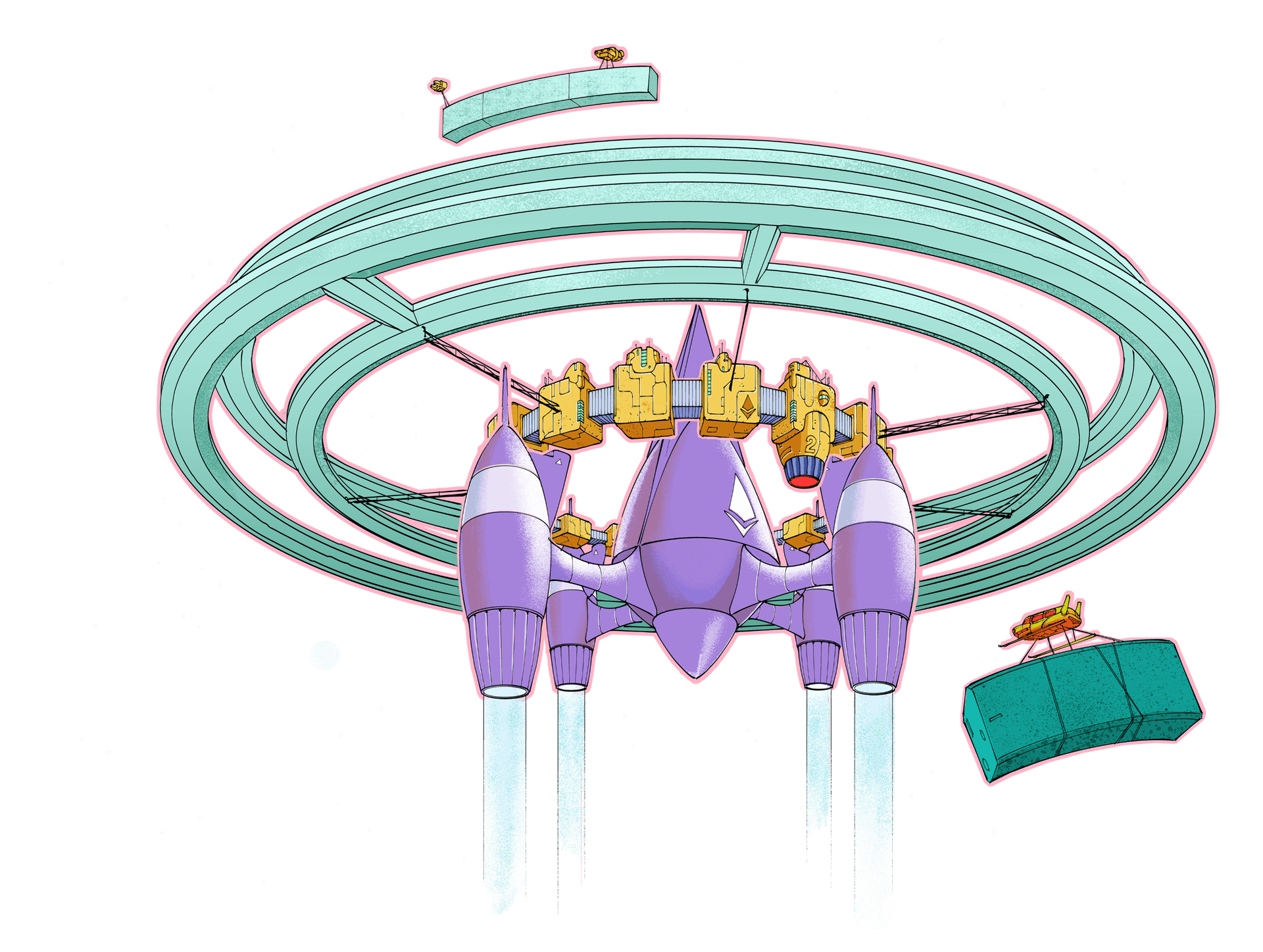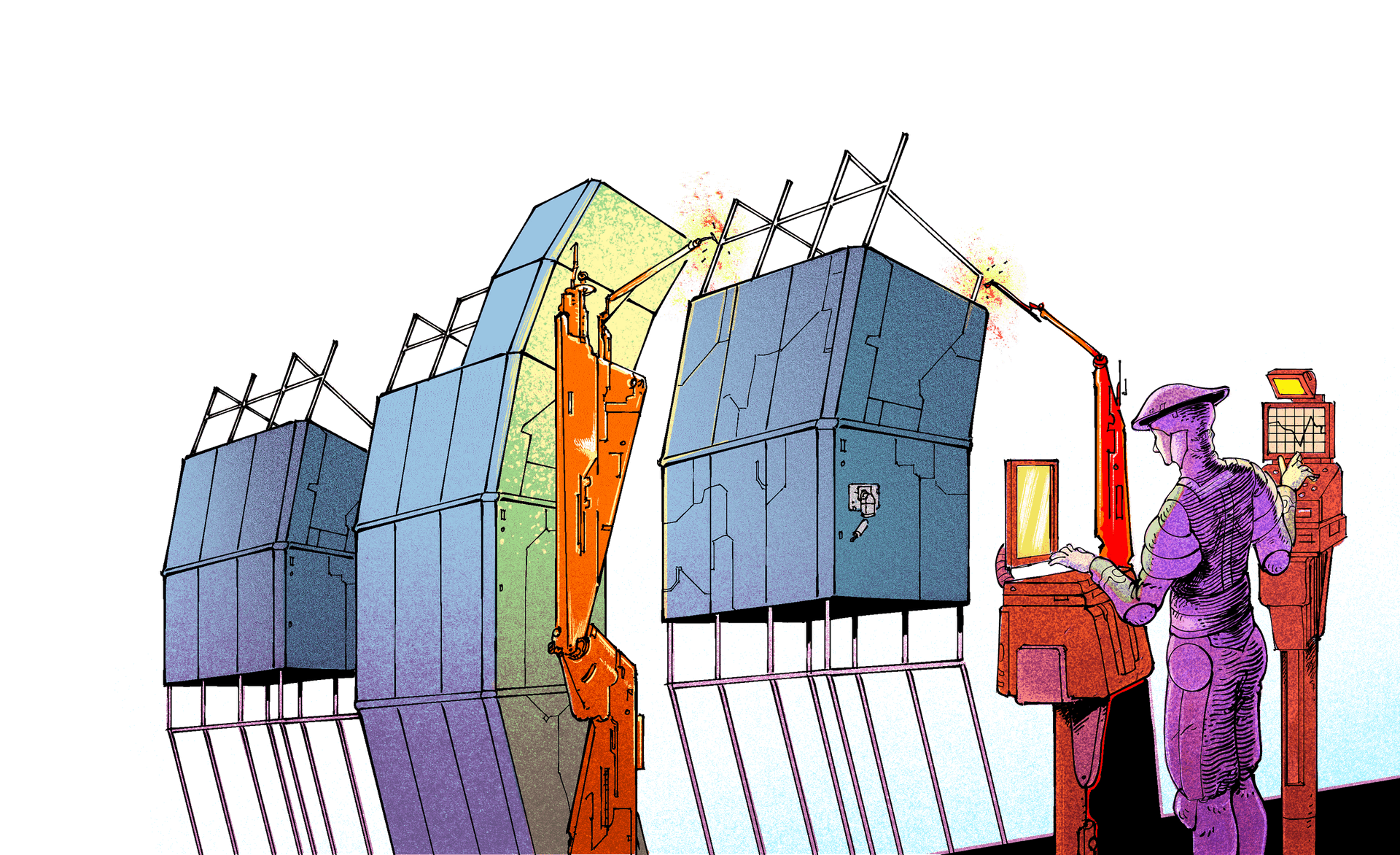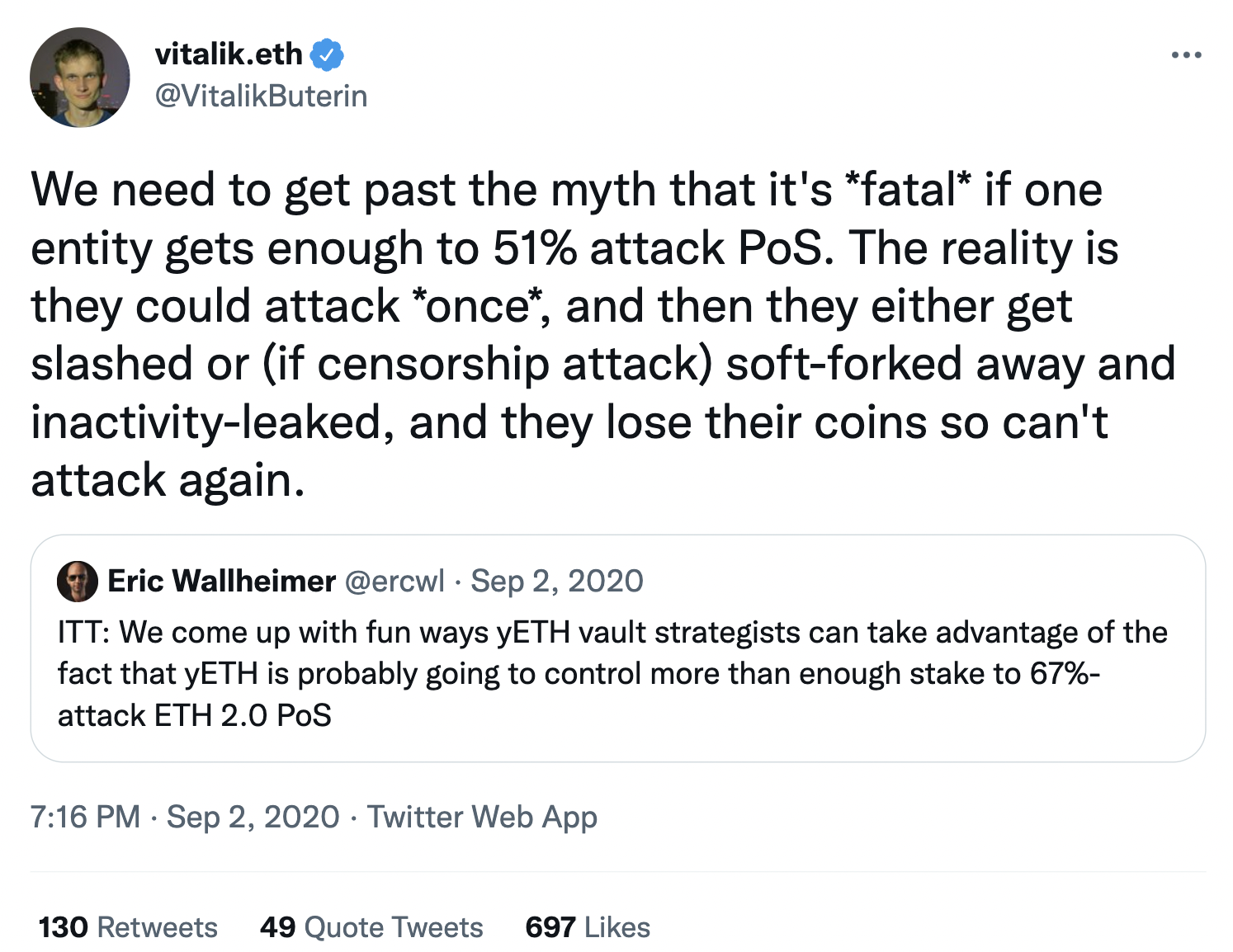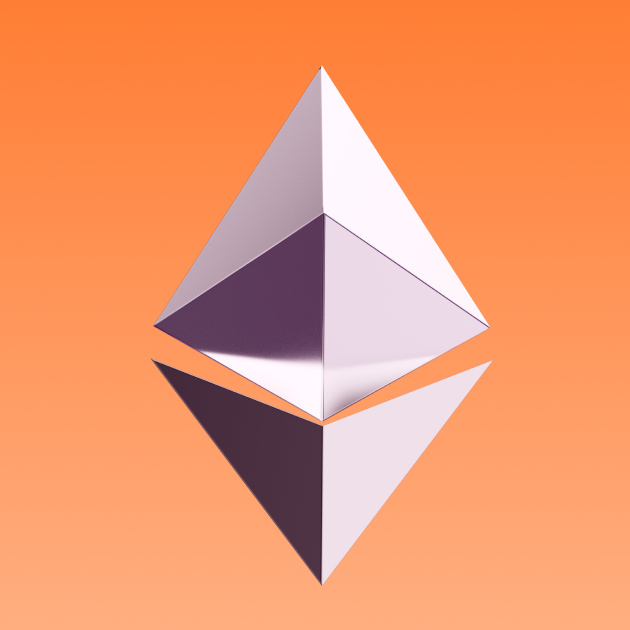Le Fusion Ethereum a finalement eu lieu. Après des années de dur labeur des développeurs, beaucoup de spéculations de la part de la communauté ETH, et un grand intérêt mondial, la plus grande étape dans l'histoire crypto a été atteinte le 15 septembre 2022.
Ethereum (ETH), le deuxième plus grand réseau blockchain, s'est distingué de ses concurrents en étant le premier à permettre des applications décentralisées (dApps). Les utilisateurs d'ETH peuvent mettre en œuvre contrats intelligents, acheter des NFTs, et interagir avec des milliers d'applications décentralisées (dApps), le tout dans l'écosystème Ethereum.
Bien que ces cas d'utilisation aient causé l'explosion de la popularité de l'Ethereum capitalisation boursière, il y avait des inquiétudes concernant la consommation d'énergie et des frais de gaz élevés associés à une activité réseau élevée.
La solution pour résoudre certaines de ces lacunes a été déployée dans ce que l'on appelle « la Fusion ». Autrefois connu sous le nom de ETH2 ou ETH 2.0, cet événement a fait passer Ethereum du minage-intensif mécanisme de consensus Proof of Work (PoW) au plus économe en énergie Preuve d'Enjeu (PoS) mécanisme.
Cet article explique ce qu'est la Fusion, en décrit les caractéristiques et la feuille de route, et détaille pourquoi elle est importante pour l'avenir de la crypto.
Qu'est-ce que l'Ethereum 2.0?
Ethereum 2.0 (également appelé ETH2 ou ETH 2.0) est le nom précédemment utilisé pour décrire la Fusion d'Ethereum.Le surnom « Ethereum 2.0 » a été abandonné pour éviter la confusion parmi les utilisateurs qui auraient pu penser à tort qu'après la Fusion, Ethereum aurait un nouveau ticker ETH2. Ce n'est pas le cas.
Une autre raison pour abandonner le nom ETH 2.0 était d'éviter que les utilisateurs ne se fassent tromper en échangeant contre des jetons ETH2 fictifs par des arnaqueurs.
Ethereum vs Ethereum 2.0 : Qu'est-ce qui va changer ?
L'utilisateur moyen d'Ethereum n'a initialement pas ressenti de changement significatif.
Les détenteurs d'ETH n'avaient rien à faire pour convertir leurs jetons existants, et ils pouvaient toujours envoyer et recevoir de l'Ethereum comme ils le faisaient avant la Fusion. Et jusqu'à ce que le sharding (plus d'informations ci-dessous) soit mis en œuvre, les utilisateurs peuvent encore s'attendre à payer occasionnellement des frais élevés. frais de gaz pendant les périodes de congestion du réseau.

Pour les validateurs du réseau—et la planète elle-même—cependant, la différence est comme le jour et la nuit. Au lieu de créer de nouveaux tokens ETH et de valider les transactions via le processus énergivore Preuve de Travail mécanisme de consensus, ce processus sera désormais réalisé de manière plus efficace par Preuve d'Enjeu modèle.
réseaux blockchain de Preuve de Travail consistent en mineurs qui rivalisent pour résoudre une fonction de hachage cryptographique en utilisant des niveaux croissants de puissance de calcul pour gagner des récompenses de bloc.
Avec les blockchains Proof of Stake, cependant, le réseau est sécurisé via des validateurs qui "mettent en jeu" un certain montant de leurs avoirs en cryptomonnaie et les utilisent pour valider les transactions.
Qu'est-ce que la fusion d'Ethereum?
Le Fusion Ethereum est la transition vers un nouveau Proof of Stake réseau à partir de l'ancien Proof of Work mainnet. Afin de transitionner en toute sécurité le courant Réseau blockchain Ethereumles plans pour la Fusion ont été déployés en phases.
Certaines des phases ont déjà été complétées au cours des dernières années, tandis que d'autres sont sujettes à des changements. L'objectif ultime était de terminer la Fusion d'ici le 15 septembre, ce qui a été réussi.
Les trois principales mises à niveau sont la Preuve d'enjeu Chaîne Beaconla Fusion elle-même, et la mise en échelle appelée Danksharding (anciennement nommé Sharding).
La chaîne Beacon
La chaîne Beacon était la première phase de déploiement et celle qui a officiellement introduit la Preuve d'Enjeu dans Ethereum. Le 1er décembre 2020, un seuil initial de 16 000 validateurs a été atteint pour déposer les 32 ETH requis pour mettre en jeu. Depuis cette date, la chaîne Beacon de Preuve d'Enjeu fonctionne en parallèle avec la couche de consensus de Preuve de Travail d'Ethereum.

La chaîne Beacon améliore la sécurité du réseau en assignant aléatoirement des validateurs afin d'empêcher les acteurs malhonnêtes d'attaquer le système. De plus, les validateurs malveillants sont punis pour leurs actions nuisibles en ayant leur ETH mis en jeu réduit.
La Fusion
La Fusion elle-même fait référence à la jonction de la chaîne principale Ethereum actuelle avec la chaîne Beacon. En préparation de la Fusion, plusieurs réseaux de test ont été fusionnés avec la chaîne principale Ethereum. Le but de ces réseaux de test était de permettre aux développeurs de tester en toute sécurité les fonctionnalités du réseau Proof of Stake sans risquer de perdre de l'ETH réel.

Ropsten, le plus ancien réseau de test Ethereum datant de 2016, a complété sa transition vers la chaîne Beacon et le Proof of Stake en juin 2022. Cela a été suivi par la réussite de la fusion du Sepolia réseau de test en juillet 2022, qui a été achevée en avance sur le calendrier. La dernière fusion de test a eu lieu en août 2022, lorsque le Goerli réseau de test a rejoint Prater, son homologue sur la chaîne Beacon.
Fragmentation
Bien que la fusion initiale n'ait pas fait grand-chose pour réduire les frais de gas, Danksharding (précédemment appelée simplement Fragmentation) devrait aider à cet égard.
En gros, la fragmentation se produit lorsqu'un ensemble de données entier est divisé en portions qui représentent le tout. Avec la fusion, la chaîne Ethereum actuelle est devenue une partie du tout, dans une chaîne de 64 chaînes parallèles.
Le Danksharding servira à améliorer considérablement l'évolutivité du réseau, car chaque chaîne fragmentée répartira la fonctionnalité de stockage de données de la chaîne Ethereum actuelle, répartissant simultanément la charge de traitement des données entre les nœuds.

Bien qu'il était initialement prévu pour 2022, l'estimation actuelle est que le danksharding sera déployé en 2024. Lorsqu'il sera publié, le sharding pourra accueillir Layer-2 roll ups comme zkSync et Immutable X qui peuvent traiter des transactions Ethereum en vrac hors chaîne à des vitesses plus élevées et à des coûts inférieurs.
Quels sont les impacts de la fusion Ethereum ?
Ces étapes progressives, ainsi que le changement principal d'un modèle Proof of Work à un modèle Proof of Stake visent à résoudre les trois principales lacunes du réseau Ethereum actuel : sécurité, évolutivité et durabilité.
Sécurité
La fusion a ajouté des mesures contre les acteurs malveillants qui essaient d' attaquer le réseau Ethereum.Le slashing est ce nouveau système de pénalité qui punit les validateurs malveillants et les attaquants potentiels en infligeant des pénalités telles que réduction, ce qui cause de perdre ETH aux validateurs affectés.

Les pénalités de réduction peuvent varier, bien que les contrevenants aux règles puissent être condamnés à une amende allant jusqu'à 18 ETH en jeu et même être exclus du réseau. Avec la preuve d'enjeu, les validateurs sont encouragés à effectuer des validations honnêtes, et par mélange des validateurs, les chances d'une attaque réussie peuvent être minimisées.
Cependant, aucun système n'est complètement à l'abri des mauvais acteurs, il est donc important de toujours être vigilant.
Donc, même si quelqu'un parvient à exécuter une attaque avec succès, la réduction est une mesure préventive qui fera perdre à l'attaquant l'ETH volé.
Scalabilité
Grâce au sharding et à la preuve d'enjeu, Ethereum sera capable de traiter entre 20 000 et 100 000 transactions par seconde.Bien qu'il puisse falloir quelques années pour atteindre cette capacité maximale, cela représente une augmentation de vitesse allant jusqu'à 999 900 % par rapport au taux actuel de 20 à 30 transactions par seconde. Ces augmentations exponentielles de vitesse devraient aider à désengorger le réseau et à maintenir les frais de gas bas.Sur le précédent réseau Ethereum utilisant la preuve de travail, entre 15 et 30 transactions pouvaient être traitées par seconde. Pour donner une idée de la comparaison avec les réseaux financiers traditionnels, Visa affirme pouvoir gérer jusqu'à
24 000 transactions par seconde à capacité maximale. Alors que l'activité du réseau augmentait sur la blockchain Ethereum avant la fusion, les utilisateurs ont signalé des temps d'attente plus longs pour la confirmation des transactions et des frais plus élevés.
De plus, en cas d'utilisation intensive, certains utilisateurs ont perdu leur frais de gaz malgré l'échec de l'exécution de la transaction.
L'équilibre ici réside dans l'augmentation exponentielle de la capacité de traitement du réseau tout en incitant les validateurs à continuer à valider. Avec la Proof of Stake, les validateurs continueront de recevoir les récompenses de bloc et les frais de transaction dans le système actuel, en fonction du montant de ETH mis en jeu par l'individu.
Durabilité
La transition loin de la Proof of Work a également beaucoup contribué à résoudre le problème énergétique des crypto-monnaies en réduisant massivement les coûts et l'impact environnemental associé à la validation du réseau Ethereum.
Tout en nécessitant encore des niveaux d'énergie significativement plus bas que Bitcoin, Ethereum n'a pas échappé à l'examen pour les coûts énergétiques élevés sous son ancien modèle de preuve de travail.
Dans un modèle de preuve de travail de consensus, des blocs de Ethereum ou Bitcoin sont validées par un processus qui sécurise le réseau en obligeant les mineurs à prouver physiquement le travail informatique réalisé pour valider la chaîne. Ce processus utilise une quantité significative d'énergie, ce qui peut entraîner des coûts élevés pour ceux qui souhaitent servir de mineurs ou de validateurs.

La bonne nouvelle est que la Fusion a considérablement réduit la consommation d'énergie du réseau actuel. Carl Beekhuizen, un chercheur à la Fondation Ethereum, avait prédit que la Fusion réduirait la consommation d'énergie d'Ethereum de 99,95 %. Et selon un rapport par CCRI (Crypto Carbon Ratings Institute), il a raison jusqu'à présent.
Frais de transaction
Malheureusement (mais sans surprise), une augmentation de l'adoption de l'Ethereum adoption et volume de transaction, a également conduit à des frais plus élevés. Les coûts de transaction sur le réseau Ethereum, également connus sous le nom de frais de gaz, sont payés en utilisant le jeton natif de l'Ethereum, Ether. Le gaz est le carburant qui alimente tout sur la blockchain Ethereum, de la validation des transactions à l'activation des contrats intelligents.
Étant donné que le temps de finalisation des transactions dépend des niveaux de congestion du réseau, cela pose un problème : à mesure que le nombre de détenteurs d'ETH continue de croître, les frais de gaz augmentent également. Lorsque les mineurs sélectionnent des transactions à valider, ils choisiront naturellement celles avec les frais de transaction les plus élevés à inclure dans les blocs.
C'est parce que les récompenses pour Ethereum minage viennent sous forme de frais de transaction, donc lorsqu'il y a plus de trafic, les mineurs sélectionneront des blocs qui paient des rendements plus élevés pour la même quantité de travail. Dans les situations de trafic particulièrement intense, les utilisateurs cherchant à payer des frais de gaz moins élevés peuvent être bloqués à attendre que leurs transactions soient validées.
Quand a eu lieu la mise à jour d'Ethereum ?
La date finale de finalisation pour la Fusion d'Ethereum était initialement fixée au 19 septembre 2022. Avec toutes les parties mobiles qu'une entreprise massive comme la Fusion englobe, la date de finalisation attendue a été retardée plusieurs fois.
C'était donc un véritable exploit lorsque la Fusion a été effectivement complétée quelques jours plus tôt que prévu, le 15 septembre 2022.
Quelles sont les prochaines étapes pour Ethereum ?
Comme le cofondateur d'Ethereum, Vitalik Buterin le souligne, il y a des mises à niveau supplémentaires se produisant en même temps que la Fusion.
Ce sont le Surge, qui améliorera l'évolutivité via le sharding; le Verge, qui introduit Verkle trees comme une mise à niveau de Merkle Proofs; the Purge, qui améliorera la congestion du réseau en réduisant l'espace disque dur nécessaire aux validateurs ; et le Splurge, qui inclura des améliorations supplémentaires pour maintenir les performances du réseau.
Depuis que la Fusion a été complétée avec succès avant la date limite de septembre 2022, la feuille de route suivante restera la même. À savoir, la prochaine étape majeure sera l'introduction de danksharding à un moment donné en 2024.
La dernière évolution majeure, appelée les mises à niveau Shanghai et Capella (Shapella), a été activée le 12 avril 2023. Cette mise à niveau tant attendue a permis aux utilisateurs de retirer des ETH mis en jeu et les récompenses de staking qui étaient précédemment enfermés pendant la transition.
FAQ sur la fusion d'Ethereum
Les détenteurs d'ETH devaient-ils faire quelque chose avec leur Ethereum pour se préparer à la fusion ?
Non, les détenteurs d'ETH n'avaient rien à faire. Leur Ether stocké ou mis en jeu a été automatiquement converti de l'ETH à l'ETH2 après la fusion. L'ETH conserve également le même symbole boursier.
Que va-t-il arriver à l'ETH mis en jeu ?
Les stakers n'ont pas pu effectuer de retraits sur leur ETH mis en jeu pendant plusieurs mois après la fusion. Dans ce qu'on appelle la mise à jour de Shanghai, les utilisateurs ont pu retirer l'ETH mis en jeu à partir du 12 avril 2023, avec une limite de retrait quotidienne de 40 000 ETH par jour (sur environ 13 millions mis en jeu).
Les validateurs, cependant, pourront recevoir des récompenses ETH liquides pour la validation du réseau. Bien qu'ils n'aient pas pu effectuer de retraits avant la mise à jour de Shanghai, les validateurs se sont vu attribuer une adresse de portefeuille unique. qui contenait leur ETH mis en jeu et les récompenses réseau vérifiées par la Beacon Chain.
Pourquoi miser de l'ETH?
Par miser de l'ETH, vous pouvez gagner des récompenses en validant des transactions. Cela est possible sans l'équipement énergivore requis pour le minage Proof of Work..
Vous pouvez staker de l'ETH en utilisant un smartphone ou un ordinateur personnel pour commencer à participer au réseau Proof of Stake d'Ethereum. Au fur et à mesure que plus d'utilisateurs stakent leur ETH, plus le réseau devient sécurisé, rendant plus difficile pour les attaquants de contrôler la majorité des validateurs.
Acheter de l'Ethereum via MoonPay
Vous pouvez toujours participer à la blockchain d'Ethereum sans acquérir les 32 ETH nécessaires pour devenir un validateur du réseau.
Vous pouvez acheter de l'Ethereum (ETH) et de l'Ethereum Classic (ETC) via MoonPay avec une carte de crédit ou de débit, un virement bancaire, Apple Pay, Google Pay, et plus moyens de paiement préférés.
Vendre de l'Ethereum via MoonPay
MoonPay facilite également la tâche de vendre de l'Ethereum quand vous décidez qu'il est temps d'encaisser. Il suffit d'entrer le montant d'ETH que vous souhaitez vendre et de saisir les détails où vous souhaitez recevoir vos fonds.
Échanger de l'Ethereum contre d'autres cryptomonnaies
Vous souhaitez échanger de l'Ethereum contre plus de cryptomonnaies comme Bitcoin? MoonPay vous permet de échanger des cryptomonnaies entre chaînes avec des taux compétitifs, directement depuis votre portefeuille non-custodial.

.png?w=3840&q=90)




.png?w=3840&q=90)